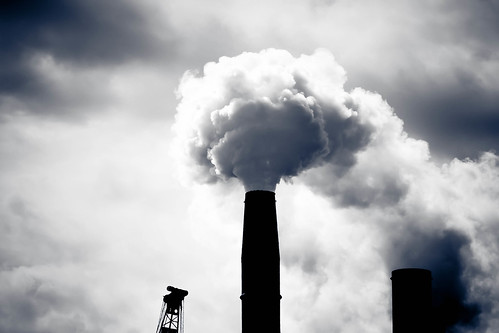When your throat feels scratchy and you cough and sneeze constantly, you may wonder what is in the air you’re breathing. Due to the rise in air pollution, you could be exposed to toxic air every day without realizing it. Hazardous materials are outside and inside your home, but you can take steps to protect you and your family.
Discover Common Pollutants

What causes pollution? If you drive on the highway each day commuting to work or school, you’re exposed to carbon monoxide and other chemicals found in vehicle exhaust. These toxins, along with other chemicals released into the air by power plants, react with organic compounds to create ozone. This ground-level ozone leads to the smog you see in some larger cities.
Respirable particulate matter is another outdoor pollutant. This matter is released into the environment by the natural decomposition of soil. Partially combusted fuels also add to the respirable particulate matter in the air.
Air quality issues aren’t limited to outdoor areas. Common products you use inside your home can be polluting indoor air, too. Detergents, upholstery, and carpeting can emit formaldehyde and other toxins that contaminate the air. Pet dander, cigarette smoke, and biological growth can also pollute the air you breathe at home.
Understand the Effects of Poor Air Quality
Breathing in polluted air can make you sick. Poor air quality can cause itchy or burning eyes, coughing, fatigue, and dizziness. Some chemicals are linked to asthma and lung cancer.
Respirable particulate matter can irritate your nasal passages and lungs, and cause coughing, wheezing, and asthma. Effects of breathing in this matter depend on the size of the particles. Smaller particles can penetrate the lungs and generate serious breathing issues. Long-term health problems include chronic respiratory issues and pneumonia.
Clean the Air in Your Home
While you have limited control over the environment, cleaning the air inside your house is possible. Ventilators can reduce pollutants in your home. Air is pulled into the unit and cleaned using filters, then clean air is circulated back into the room. Use a dehumidifier if you see biological growth in dark, damp areas. If you smoke, do your best to quit, and don’t let anyone smoke inside your house.
Vacuum rugs and mop floors often to limit the pet dander and dust floating around your home. Vacuums that use high-efficiency particulate air (HEPA) filters can also remove microscopic particles from the air including bacteria, soil, and pathogens.
Support a Cleaner Environment
Help create a cleaner world by taking steps to limit your carbon footprint. If your budget allows, invest in a hybrid or electric vehicle. Don’t keep the engine running to cool or heat your car before you get inside. Try to limit your time driving in congested areas, and if you can, distance yourself from manufacturing and power plants.
You can’t completely escape polluted air. However, you can have some control over what you breathe in every day. Try the solutions above to limit your exposure to indoor and outdoor air pollutants.
